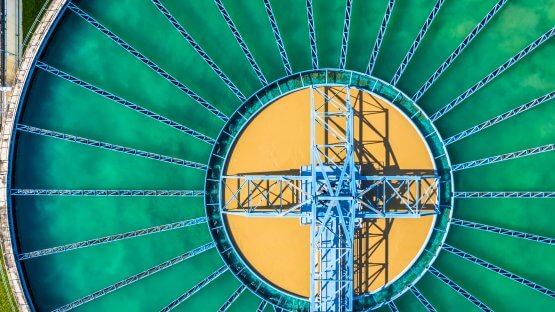Pump Protection Creates Fuel Savings with Plum Creek Screens

Protecting Pumps with PLUM CREEK Screens: Independent Research
Confirms Fuel-Saving Benefits
Application: Any surface source water with organics & debris
Problem: Unprotected pump suction intakes lead to severe congestion in the pump, worn impellers and inefficient pump performance. And installing a stationary screen for “protection” frequently creates more problems than it solves. Algae, leaves and other floating debris found in effluent ponds, streams, irrigation ditches, rivers, manure sumps, lakes and re-use pits cling to the surface of these stationary screens, blocking the available water intake area. As clogged screens reduce the pump’s suction, systems soon experience excessive and costly fuel consumption, increased pump wear, interrupted watering schedules and cavitation. And the time and mess associated with cleaning the screen adds an additional problem.
Solution: PLUM CREEK Self-Cleaning screens prevent plugged screens and eliminate restricted pump suction by means of a continuous and reliable internal backwash process. The economic importance of this is clearly illustrated in the findings of an independent research project conducted by Irrigation Efficiency Consultant, Edwin E. Hult, of Creighton, Nebraska. In his study of fuel consumed by a centrifugal pump (operating first with a stationary screen attached to the pump’s intake pipe and, later, with the benefit of a PLUM CREEK Self-Cleaning Screen),
Using a stationary screen, the pump’s suction was restricted by a heavy build-up of debris, resulting in a reduction of flow and pressure and an increase in horsepower, fuel usage and vacuum level. With the PLUM CREEK Screen, however, water flowed freely because clogging did not occur, and the engine operated under less stress (a reduction in pressure and a decrease in horsepower from 138 to 81, leading to a drop in fuel consumption of 2.67 gallons per hour. At an average cost for diesel fuel of $1.18 per gallon, potential season savings would amount to $3,150.00.
(Calculations for fuel savings in this test situation were based on an average of 1000 turf or agricultural irrigation hours per season. In actual applications, however, savings would often be even more significant because higher flow rates would typically lead to a reduction in required irrigation hours.) Note also, that after installation of the PLUM CREEK Screen, the vacuum reading at the pump’s suction – which should be approximately 1.1″ of vacuum for every 1 foot of lift (elevation from the water’s surface to the pump’s suction) – decreased from 20.9″ to 8.8″ … a dramatic 138%!
Clearly, PLUM CREEK Self-Cleaning Pump Intake Screens encourage optimum pump performance, fuel savings, and trouble-free operation of high or low pressure water systems … allowing you to get all of the water you are paying for.